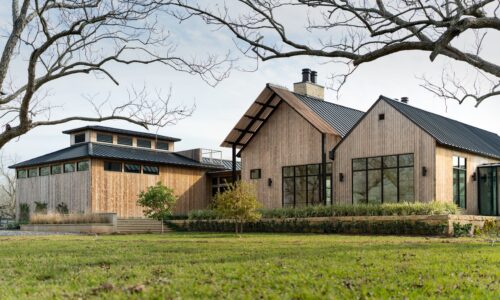How do you figure out the best siding profile for your project? We help you make the right connection on this episode of TimberTips!
A profile can refer to many types of products on a job site, from trim and moldings to flooring and decking. In this video, we will be talking about wood siding and soffit profiles.
The first thing to consider when choosing a siding or soffit profile is whether it's for the exterior, interior or ceiling.
Exterior profiles need to account for the elements like rain and snow, you need to allow air flow behind the siding so it can dry out. This is typically called a rainscreen system, and a rainscreen profile is a great option for exterior siding. Most rainscreen profiles come with clips that can be used for easy installation. Another good option is a tongue & groove profile, like a pattern #122 or a fine line. The tongue and groove connection adds stability to the siding, but you still need to using furring strips to allow for air flow behind the siding. When using any of these profiles as exterior siding, be sure to install the boards with the groove facing down so water doesn't get trapped and rot the siding.
If your siding is for the interior, the shiplap profile is the most popular. The term shiplap has been popularized by the design industry to represent a certain look, but it also represents a profile type. Also known as Lap and Gap, shiplap boards overlap each other and can be used to create a faux gap between boards.
Shiplap profiles require face nailing, so if you want to hide your fasteners you can use a profile called Tex-Gap. Tex-Gap is a combination of a shiplap and tongue and groove. You have the look of shiplap with a tongue and groove system that hides the fastener behind the groove. We use the Tex-Gap profile a lot for interior and exterior use. In fact, it's on 1010 West 10th in Austin, TX.
If you're installing your wood siding on the ceiling or soffit, you want to use a tongue and groove system, and it helps to find a siding that is end-matched. End-matched boards have a tongue and groove on the end of the board so each board is connected end-to-end and on the sides.
The benefit to end-matching is you don't need to line up the joints on a stud, so it makes install time much quicker.
There's a lot of companies that offer this option for soffits or interior walls. Synergy Wood Products, Real Soffit by Woodtone and Interfor are a few companies we've worked with that have end-matched boards.
The other thing to consider when choosing the perfect profile is the look you want to achieve. Do you want a slight gap between boards or a groove? Do you plan on staining or painting the wood or do you want a prefinished product? There are even reclaimed wood siding options to consider like rewoodd.
There are a lot of options for this, but once you know where the siding is going it's easier to narrow down the profile that will give you the look you want. Whether you need to use a rainscreen, tongue and groove or shiplap profile, they all have options that provide the front-facing look you want.
To help you figure out the profile you need, we designed this milling profile poster. What's cool about this poster is that all of the profiles are to scale so you know what the profile will look like before you make the purchase. OHC actually gives away this poster away for free in a digital download or physical format.





